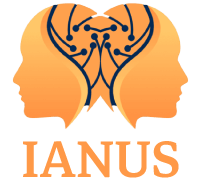Even if we can appreciate the role SciComm has to play in building and fostering trust in science, it comes with important limitations. First, if we want to engage in effective SciComm dissemination to repair people’s trust in science, we must remind ourselves that this is contradictory in and of itself. This is because, conceptually, trust involves an incapacity to evaluate information independently. As a result, we could turn to participatory forms of SciComm as a more effective tool to strengthen trust. Secondly, reducing distrust through dissemination activities is paradoxical since distrustful audiences already have a negative inclination toward the communicator. Her or his lack of credibility in their eyes will, therefore, affect the credibility of the content that is being communicated. Therefore, situations of high distrust will require more trust repair mechanisms than SciComm alone.
While there are legitimate reasons for promoting trust in science, the question of who benefits from a SciComm effort (to promote trust) deserves more attention. Additionally, if a SciComm initiative has a promotional or persuasive dimension, then it should adhere to existing professional codes of ethical persuasion and ethical PR. Even if a SciComm effort to foster trust is perceived as persuasive, this effort may or may not be resisted depending on the audience’s prior beliefs, goals, and expectations. We must take a step back and ponder about the trustworthiness of a scientist who embarks on a mission to persuade others of her trustworthiness: what is expected, acceptable, and appropriate in such an interaction? We must also be clear about the goals of embarking on a persuasion attempt: to whose benefit is it? Could there be any internal conflicts of interest? Even promoting a trustworthy image of science might be seen as a manipulation or as institutions’ efforts to pursue its strategic goals and continue its operation. We must remind ourselves that the credibility of a mediated communication such as SciComm is affected by all its constituent elements: its source and audience, the channel or format used, the content of the message, and the context in which the SciComm initiative occurs.
We recommend some caution towards the aspiration to design a communication for trust. A well-crafted communication will undoubtedly contribute to the perceived credibility of its message, but the publics that grant or withhold trust in science are more than passive receivers that must be convinced of the credibility of a message or source.
A core objective of the IANUS project is to assess some of the frequently repeated assumptions about trust in science. Our investigation contributes to dissecting the assumption that SciComm can and should instill trust in science and shows that the trust objective of SciComm is not without limitations. We note that the objective to indiscriminately promote trust results in missed opportunities to prevent excessive trust, promote critical thinking, or properly counter distrust. For these reasons, we advocate for a discriminative approach to trust: one that differentiates between trust and distrust and between warranted and unwarranted expressions of trust or distrust.
While critical, our analysis does not conclude that SciComm is not worth pursuing or that SciComm cannot contribute to a trustful relationship between science and society. What we call for is more reflection by SciComm initiators about their motives and desired outcomes. Awareness and reflection can contribute to better and more ethical practice (e.g., by facilitating ethical persuasion when needed). They can also encourage a more contextualized approach that avoids generalized efforts to promote trust in science and favors SciComm activities that negotiate specific trust issues in relation to specific trust objects tasked with specific tasks.
